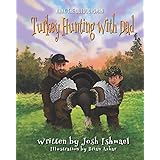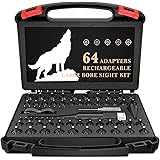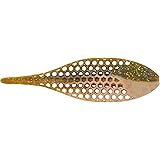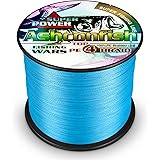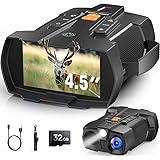Recognizing the increasing uncertainties of the modern world, where access to conventional medical care can become compromised, the demand for comprehensive medical preparedness resources has seen a significant surge. It has been observed that while many medical guides exist for immediate first aid, few adequately address long-term health challenges when professional help is entirely unavailable. This critical gap in essential knowledge has led to the creation of updated resources like the one discussed in the accompanying video: the Fourth Edition of The Survival Medicine Handbook: The Essential Guide for When Help is NOT on the Way. This latest edition, released more than five years after its award-winning predecessor, is reported to be greatly expanded and revised, aiming to equip the average citizen with the knowledge to become an effective family medic.
Embracing Medical Preparedness for Austere Environments
The concept of medical self-reliance is gaining paramount importance. In scenarios where hospitals are overwhelmed, understaffed, or inaccessible due to natural disasters or other catastrophes, individuals and families are often thrust into a situation where they must manage medical emergencies on their own. This shift necessitates a foundational understanding of survival medicine, moving beyond basic first aid to encompass a broad spectrum of medical issues, from chronic diseases to childbirth in austere settings.
1. Understanding the Need for Self-Reliance in Medical Care
The frequency of both natural and man-made disasters has reportedly increased in recent years. These events, which can include hurricanes, wildfires, floods, tornadoes, and episodes of civil unrest, often lead to situations where standard medical services are incapacitated. For instance, floodwaters can wash out roads, preventing emergency responders from reaching those in need, or widespread power outages can disable modern medical equipment. Historically, many traditional first aid guides have concluded by advising readers to seek modern medical care, a recommendation that becomes unfeasible when infrastructure collapses. Therefore, a comprehensive resource for medical preparedness is not merely a precautionary measure but a vital necessity for safeguarding family well-being.
2. The Role of the Family Medic in Emergency Situations
In the absence of professional medical personnel, a designated “family medic” becomes the primary healthcare provider. This role demands a diverse skill set, encompassing the responsibilities of a paramedic, physician, nurse, and even therapist. The effectiveness of a family medic is heavily dependent on their ability to make rapid, informed decisions, manage limited resources, and address a wide variety of injuries and illnesses. It is crucial that such an individual is prepared for diverse scenarios, understands the number of people they are responsible for, and has provisions for any special needs within their group.
Key Areas of Focus in Survival Medicine
The scope of survival medicine extends far beyond what might be considered conventional first aid. It delves into numerous specialized areas, providing actionable strategies for health management when modern conveniences are unavailable. From understanding basic anatomy to mastering complex medical procedures with limited tools, a holistic approach is adopted.
3. Essential Medical Supplies and Their Management
Having the right medical supplies is fundamental to effective survival medicine. Beyond a standard first aid kit, consideration must be given to constructing comprehensive medical kits tailored for austere settings, such as a personal carry (IFAK) kit, a vehicle kit, a family kit, or even a field hospital setup. The quantity of supplies required is often underestimated; it is advised that enough materials be stocked to cover prolonged periods. Furthermore, knowledge of how to disinfect medical supplies, the difference between sterile and clean techniques, and the potential for medical supplies to be used as barter are valuable insights. For example, specific protocols for handwashing and water disinfection become critical in preventing the spread of disease when modern sanitation systems are compromised, a concept that is expanded upon from basic hygiene principles.
4. Leveraging Natural Medicine and Home Remedies
When conventional medicines are scarce or unavailable, natural alternatives become indispensable. This includes a deep dive into the properties and uses of various natural herb products, essential oils, herbal teas, and tinctures. Practical skills such as growing medicinal gardens, identifying useful herbs, and methods for harvesting are also vital. For instance, while modern medicine offers quick relief for inflammation, understanding which herbs can naturally soothe pain or reduce swelling can be a game-changer in a long-term disaster. The proactive bolstering of the immune system through proper sleep, nutrition, stress management, and the use of probiotics and supplements is also emphasized, aiming to prevent illnesses rather than just treating them.
Navigating Specific Health Challenges Off-Grid
A significant portion of the Survival Medicine Handbook is dedicated to addressing specific medical conditions that are likely to be encountered without advanced medical support. This section covers everything from minor ailments to life-threatening trauma, ensuring a broad educational base for the family medic.
5. Diagnosis and Examination with Limited Resources
Accurate diagnosis is a challenge when technology is absent. The principles of a thorough physical examination, including taking vital signs like pulse rate, respirations, blood pressure, body temperature, and assessing mental status, are crucial. The ability to conduct a problem-oriented exam and document findings using tools like the SOAP note (Subjective, Objective, Assessment, Plan) becomes an invaluable skill. These systematic approaches allow for consistent care and the tracking of patient progress, even in rudimentary conditions.
6. Managing Injuries and Chronic Conditions
The curriculum extends to various types of injuries and common chronic diseases. For instance, detailed guidance on treating head issues like concussions or strokes, managing dental problems from toothaches to extractions, and handling respiratory infections such as pneumonia are provided. Cardiac events, abdominal issues (including severe intestinal infections like botulism or cholera), urinary tract issues, and complications related to the genital tract are also covered. Furthermore, comprehensive sections on bone and joint injuries, skin conditions, animal bites and stings, allergic reactions, and the critical aspects of wound care—from minor cuts to major trauma involving significant bleeding or internal injuries—are included. It is reported that the Fourth Edition includes more issues than ever before, discussing almost every subject in greater detail to help the family medic identify, treat, and prevent sickness and injury.
7. Special Considerations: Mass Casualties, Childbirth, and Pandemics
Some scenarios require highly specialized knowledge. Mass casualty incidents (MCIs) necessitate effective triage protocols, such as S.T.A.R.T. (Simple Triage and Rapid Treatment), to prioritize care. The complexities of pregnancy and childbirth in survival settings, including preventing complications and performing deliveries, are also addressed, an area that historically contributed significantly to mortality rates before modern medical advances. The book also dedicates an entire section to pandemics, delving into how infections spread, the R-nought number, and practical strategies for setting up an epidemic sick room, reflecting the increased awareness brought about by recent global health crises like COVID-19. It is important to remember that such situations were once major causes of death and disability, and preparedness seeks to mitigate these risks.
Preventing Medical Problems and Maintaining Health
A key philosophy underpinning effective medical preparedness is the emphasis on prevention. By proactively addressing potential health issues, the burden on limited resources can be reduced, and overall family well-being can be significantly enhanced.
8. Proactive Strategies for Long-Term Health
Beyond treating ailments, a significant focus is placed on prevention. This involves implementing rigorous hygiene and sanitation practices, ensuring food and water safety, and managing environmental hazards like extreme heat or cold. The insights gathered from historical medical texts, specifically from the 19th century, are often referenced to find practical, low-tech solutions that were effective before the advent of modern medicine. While many of these older methods are considered obsolete today, a number of ancestors’ strategies are identified as potentially useful in a future catastrophe, particularly for preventive care and basic treatments when advanced options are unavailable. This includes robust protocols for nursing care off-grid, focusing on patient safety, shelter, nutrition, and hydration for bedridden individuals, all crucial aspects often overlooked in basic first aid training.
9. Managing Medications and Mental Health Off-Grid
The responsible use and storage of essential over-the-counter medications, pain relief, and antibiotics are critical components of survival medicine. Guidance on determining which antibiotics to stockpile, how much to store, and proper storage to avoid spoilage is provided. Equally important is the consideration of mental health in prolonged crisis situations. Strategies for managing anxiety, depression, post-traumatic stress syndrome, and sleep deprivation are discussed, alongside natural remedies for sleep, underscoring the holistic approach necessary for survival. This acknowledgment reflects a deeper understanding that physical health cannot be sustained without mental resilience.
The Fourth Edition of The Survival Medicine Handbook serves as an invaluable reference guide for families committed to self-reliance. Its comprehensive coverage, updated content, and significantly increased number of illustrations are designed to make the family medic effective in their critical role, helping them “keep it together, even if everything else falls apart.” For those seeking robust information on survival medicine handbook topics and practical medical preparedness, this resource is considered a cornerstone.



